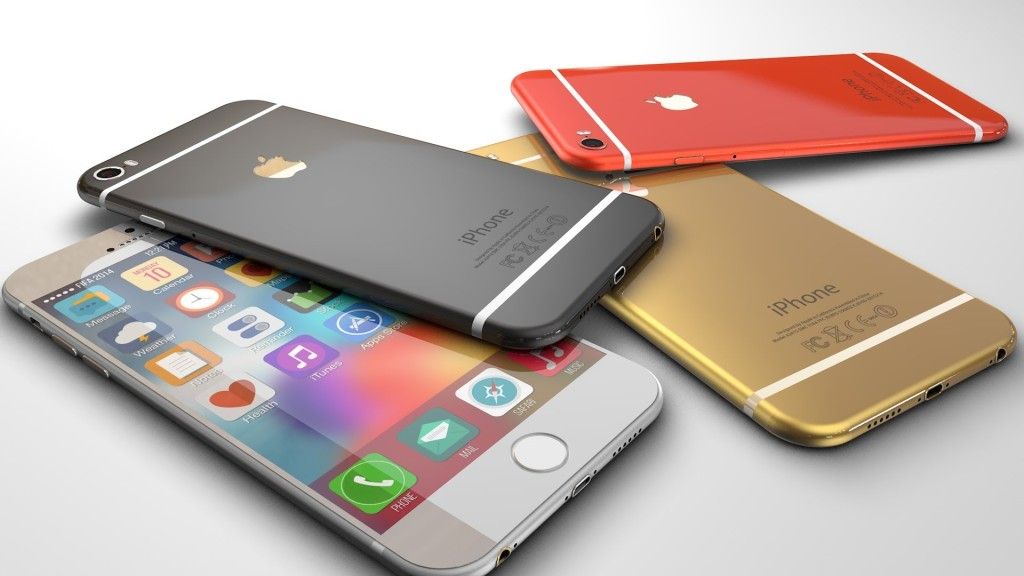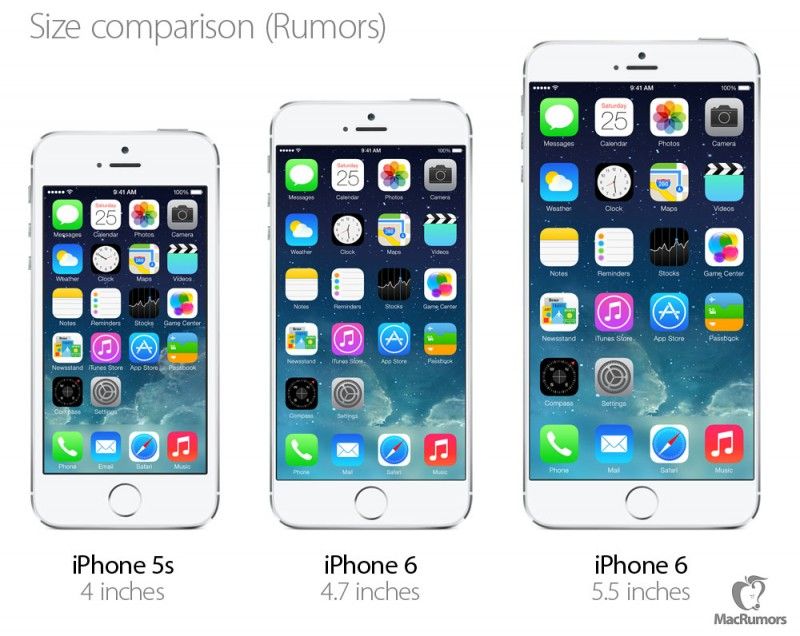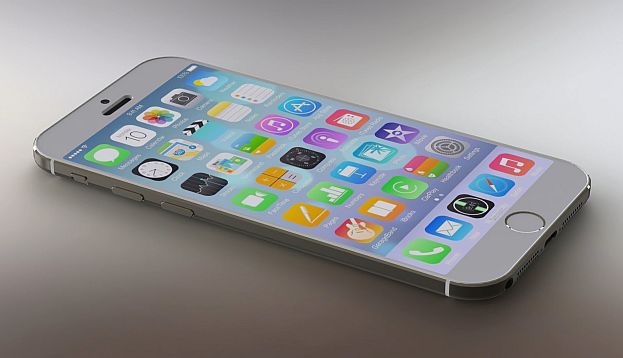The fall is that time of year for pumpkins, the turning of the leaves… and the introduction of new Apple devices. This year, the changes look to be more significant than last year — or perhaps for the last several years. As usual, the rumor mill has been buzzing, but this time we have numerous sightings of Apple parts for new devices to lend some solidity to the rumors.
Of course, with iOS developers raking in billions of dollars, and games being the #1 category for iOS app revenue, the introduction of new devices is highly significant to the game industry. Taking advantage of changes in Apple’s hardware lineup, and the release of new system software, can mean millions for companies that do it right. There’s also a major marketing opportunity for some lucky games that may be the featured app to demonstrate the power of new Apple hardware.
The rumors seem to center around Apple holding an event September 9, where it will introduce one or perhaps two new iPhones, and an October event where the company will introduce new iPads. Speculation has centered on the iPhones because of the rumored new screen sizes, while the iPads will probably be content with faster processors and the Touch ID sensor, and perhaps better cameras.

The new screen sizes for the new iPhone 6 models are still a mystery, but one that some analysis can help illuminate. John Gruber’s Daring Fireball blog has an extensive analysis of the situation, looking at what Apple has done in the past and the hints provided by the recent Worldwide Developers Conference, along with some quite logical math. Gruber selects the following screen sizes: 1334 x 750 for the 4.7″ iPhone screen (326 pixels per inch); and 2208 x 1242 for the 5.5″ screen (461 pixels per inch).
These resolutions would put both phone screens over the Retina display threshold of 300 ppi. The 5.5″ iPhone screen would be an impressively high resolution, but we’ve already seen phones with screens at even higher resolutions, like the new LG G3 at 2560 x 1440, which should be shipping this fall. So it’s not impossible, but it would be at the cutting edge of display technology – which might explained the rumored production difficulties with the larger iPhone 6, which may keep it from widespread availability until late this year or early next year.
The large iPhone 6 is also rumored to sport an even more improved camera than the 4.7″ iPhone 6, along with a top end of 128 GB of storage, and perhaps an extra $100 retail price to go along with those extras. The extra price point plus the limited early availability, along with the large size, make it logical to assume that the 4.7″ screen size iPhone will be the biggest seller, and the sweet spot in the market.
Game developers will of course continue to target the largest possible markets, so don’t expect new games that are only aimed at the latest devices. It’s quite possible, though, that a game developer could offer special graphics that are only seen on the latest Apple hardware. That’s the sort of thing that might get you invited up on stage during Apple’s introduction of new hardware, something that has happened to Chair Software on more than one occasion, as Apple used Infinity Blade to show of the graphics power of the latest iPhone.
The real impact for game industry will be in Apple’s market share. It seems likely that the new devices being introduced will sell well, with rumors noting that Apple is ordering somewhere in the neighborhood of 70 to 80 million iPhones for delivery before the end of 2014. With the previous record of selling 51 million iPhones in a single quarter, it seems Apple believes it can blow past that number with ease.
This is a good opportunity for game companies to make an impression, with new device owners looking for something that will showcase the power they’ve just purchased. There’s nothing like the latest game with amazing graphics to show off that new iPhone or iPad. A senior game app designer at a major publisher sees Apple continuing in its role as the prime target for apps. “I believe iOS will probably continue to be the first development target for mobile game developers because it isn’t fragmented,” the designer noted. “The large market share plus minimal changes needed to address all iOS platforms just make it a clear choice. With any platform that has severe fragmentation, it then becomes a game of which handsets give a large enough ROI to warrant the additional dev time.”

The [a]listdaily spoke with Paritosh Shah, Head of Mobile Engineering from Pocket Gems, about the impact of Apple’s new devices.
[a]listdaily: How will iOS 8 features impact games and game development? Are there important changes, or is it minor? What about Metal, Apple’s new and more powerful graphics software?
Paritosh Shah: We’ve been seeing a shift towards high-quality AAA games on mobile and the most recent announcements from Apple, especially their Metal technology, is a confirmation of the trend and will help accelerate it. As developers start understanding and integrating the enhanced capabilities you’re going to see a higher bar being set for quality of games on mobile which will improve the total ecosystem. I believe you’ll also see more proprietary tech in mobile games over time as developers build unique experiences in order to set themselves apart in the space. At Pocket Gems, we’ve invested heavily in our own engine built from the ground up to be optimized for mobile, that’s going to help us create rich and engaging novel experiences for our users.
[a]listdaily: Supposedly the iPad line will get faster processors and the Touch ID sensor, but no other major changes. Sales have been slowing for the iPad. What do you see for the future of iPad games, and how will this new hardware affect things? Is the iPad still going to be the best tablet for games?
Paritosh Shah: We believe that smartphones and tablets will be greatest gaming and entertainment platforms of our lifetime, but we have a long way to go. What we’ve seen for iPads is longer replacement cycles (versus iPhones) which factors a bit into the sales figures. Because of the longer replacement cycles, we definitely see a lot of users on old iPad 2’s and it’s crucial to build your game with performance in mind for these low end devices. At Pocket Gems, we’ve built proprietary tech that seamlessly tunes the features and richness of gameplay to the performance profile of the device. This way we’re able to address a very broad market while keeping the quality bar for high end devices.
[a]listdaily: The new iPhone models are coming soon, reportedly featuring larger screens (4.7″ and 5.5″) that probably have higher resolutions than the current 1136×640 resolution, and no doubt with a faster CPU and GPU. What impact will this have on your current games, and games you are planning?
Paritosh Shah: Our next generation of games are going to be a significant departure from what people have seen from us before. New tech is very much affecting our batch of games — both from devices and our own.
[a]listdaily: The market share for iOS has fallen worldwide, but the Android share is more fragmented by OS versions, devices, and markets. Do you think iOS will continue to be the first development target for mobile game developers, or will that change?
Paritosh Shah: We believe that with today’s tech and third party providers, having to choose just one platform is actually a false dichotomy. The focus should be on making the most fun mobile game possible, platforms and new devices should be a secondary concern.

